#gce a level
Text
but a high school party is the perfect place to announce a goddess of mystery and doubt! who needs doubt as a comfort more than goddamn high schoolers who are told every day that they need to figure out who they are and fast, because the future is coming, and it won't wait, and you'll get left behind if you don't already know what you want. Cassandra goddess of mystery should absolutely be the patron of teenagers, the one who tells them it's okay not to know! it's okay to be figuring it out! you have time! you are a mystery infinitely unravelling and what violence it would be to force yourself into a little box before you're even ready!
#dimension 20#i love. cassandra. i love fictional divinities.#i worked at an english secondary school this year and the expectation that fourteen year old year nines have an idea of their future career#would have been a terror to grow up in. the feeling that gces and a levels are narrowing your horizons. there's only one path for you#and god forbid you fuck it up or fuck around and end up nowhere.#the absolute comfort of a god who says 'it's okay not to know'#'there is in fact a sacred aspect to the not knowing. to the undecided and as yet unformed.'
10 notes
·
View notes
Text
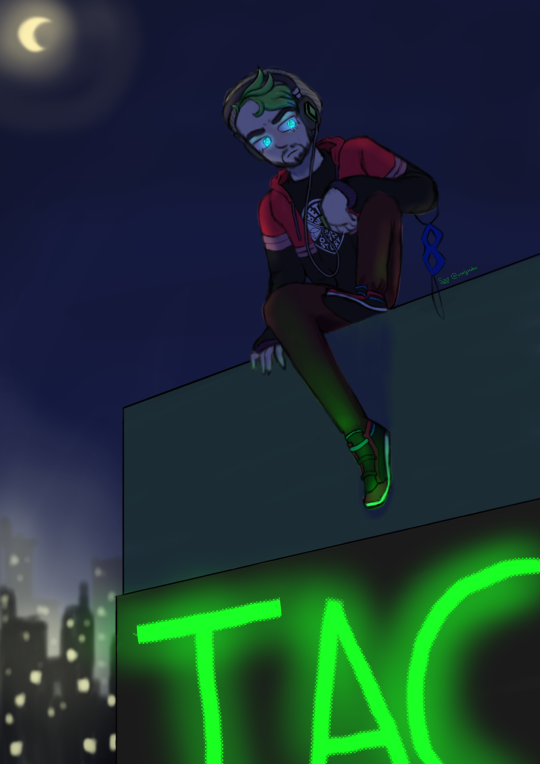
“Well,” the hero sighed. “Evil never sleeps I guess.”
Based off the DTIYS from @turquoisemagpie before it… spiralled out of control. But hey, here’s Jackie! This really kicked me back into a JSE and art mood so it was fun :D
(And yes, the sign says “JACKSEPTICEYE”, why do you ask?)
The unfancy version (where it looks like a DTIYS)

#my art#art#fanart#septicart#septic egos#jackieboy man#do you know how long it took me to get the words on the shit right?#do you?#i have art o-level GCE and it had been ingrained in me by my teacher to do fucking ‘interesting perspective’#thanks ‘cher really made things difficult for me#it’s stuff like this that reminds me why I like art so much so thanks Soph#as I was posting I realised I made some oopsies because I’m an anxious perfectionist#but I’m also aware you’re not supposed to advertise your mistakes#so if it managed to pass my first inspection it’s good enough for me#this isn’t being professionally critiqued anyways so#also the way I hung Jackie’s mask is actually how I hang my mask when I eat#and I don’t have a convenient tissue or plastic or carabiner
62 notes
·
View notes
Text
went insane after results day and then started work and had no time. also the laptop keeps crashing and if it hadn't been like this since i got the bloody thing i'd say it had a vendetta. i do want to write so much all the time but i am going through it right now. the ministry is dicking around and taking forever to process my shit, which is fucked up because i am Literally Right Here and have been for YEARS. i'm sure there's like 12 things i'm forgetting i hate it here.
#this is probably the most embarrassing updates post i've ever made#i'm kind of going through it a bit. oops#bit of a long shot as i think i only have one british follower and they did not do the same a levels as me (hello morgan)#but has anyone taken pearson psychology a level im thinking of taking it instead of retaking edexcel gce ial psychology
2 notes
·
View notes
Text
Achieve academic success with BMC's GCE O Level courses in Singapore. Tailored for students seeking excellence, our programs provide comprehensive preparation for O Level examinations.
0 notes
Text
DAMRO Job Vacancies 2024: Management Trainee position in Jaffna requiring GCE Advanced Level qualification. Apply now!
#lanka career#job vacancies 2024#sri lanka job vacacnies#job vacancies in sri lanka#srilanka#management assistant#management trainee#damro#gce advance level
0 notes
Text
whole ass debating if i should make a(nother) studyblr. i dont think it would help me in any way but i kinda want to do it again for masochistic reasons i think
#me meta#will it make my life a bit worse actually? yes.#yet i still want to do it. thats fucked!#my previous studyblr was back in my gces/a levels & my singular claim to fame is that teen vogue nicked my content lmao
1 note
·
View note
Text

'As a nurse you could help the recovery of the mentally ill', nursing recruitment poster by Central Office of Information, England, 1950-1966
This poster was part of a drive to recruit mental health nurses and advertises jobs for those aged 18-45. It indicates that GCE ‘O’ levels (General Certificate of Education, now GCSEs) were not required. The poster states: ‘You could help the recovery of the mentally ill’, as was issued by Oakwood Hospital, in Maidstone, Kent. The image appears to be a clear attempt to promote mental health patients as ‘everyday’ people, with a well dressed patient being escorted by a young female nurse. The emphasis on recovery from mental illness highlights an attitude shift. Mental illness was no longer a lifelong affliction, but something one could recover from.
Oakwood Hospital was founded in 1833 as the Kent County Lunatic Asylum. It housed over 2,000 patients by 1948 (briefly before this poster was issued). Like many original 19th century asylums, Oakwood Hospital was closed in the 1990s.
Science Museum
21 notes
·
View notes
Text
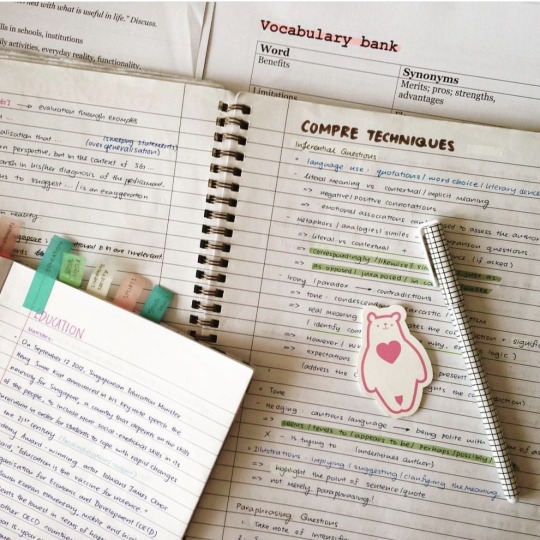
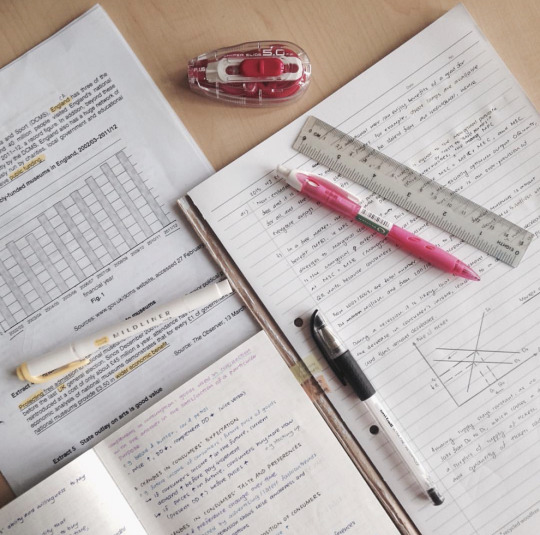


Old study notes from 2016 (wow… almost 7 years ago)
The lowest point of my life when I was studying for the GCE A Level examinations in Singapore. I joke that’s it my depression era (coming from an Asian family who don’t prioritize mental health) but looking back it was seriously frightening.
Dug these old photos because back then I didn’t score the best but I made it to university. Didn’t graduate at the top of my cohort but I found a great job. People always say that you’ll find a way in life and I never quite believed them but after 7 years, I do now.
YOU WILL FIND YOUR WAY IN LIFE EVENTUALLY.
Because I did! Sorta. No one can tell you how to live your life except yourself, not even your parents or your teachers. Live your best life and listen to your heart because eventually, everything will work out ♥️
#studyblr#study notes#studying#a levels#o levels#because I can’t believe my parents still try to put me down for things that happened 7 years ago#study inspiration#study#study spo
172 notes
·
View notes
Text
I answered one of these the other day, but some options were missing and it didn't feel inclusive enough towards non-US people and people who didn't do university studies so...
"Still studying" = I am pursuing studies in a school (of any kind) at the moment or have enrolled to start soon.
And because these things are Complicated worldwide, please consider:
* high school: a school where you get a general education in a variety of subjects until approx. age 18; graduating from a school like allows you to enroll at university. This includes diplomas such as GCE A-Levels, baccalaureat, Abitur, Matura, etc.
** trade / vocational / technical school: may be an alternative to high school or something done after high school instead of university to learn a trade/craft; when you graduate, you are qualified for a job in the field you studied. Universities may not let you enroll or may ask you to do preparatory classes if you have this type of diploma.
*** Bachelor's degree: a degree equivalent to 3-4 years of university studies. If your diploma is not called a Bachelor but you studied for that long at a university or equivalent institution, choose this.
**** Master's degree: a ~2-3 year degree that complements a Bachelor's degree. If your diploma is not called a Master but you studied for 5+ years total at university or equivalent institution, or got extra uni-level qualifications after your first university degree (but not a PhD/MD), choose this.
24 notes
·
View notes
Text
Guys, how good do you have to be in a language to be considered fluent?
Well, more to the point: would you consider me fluent in Chinese, or more specifically Mandarin? I got a B in Chinese GCE O-levels, my first job was in a Chinese-only workplace (they spoke a mix of Cantonese, Hokkien and Mandarin) but I had to communicate in broken mandarin and sometimes ended up using hand signals. I can more or less hold a conversation in it, though my responses tend to be just nodding and one-word answers. Also I speak Mandarin with a British accent (don't ask why, I don't have any British ancestry and I've never even been there).
My friends who speak it as a first language consider me not fluent but the ones who don't... Also consider me not fluent :( Mostly because I was worst in class back in secondary school (in my defense half those guys were first gen immigrants from mainland China)
7 notes
·
View notes
Text
Pattie Boyd 1961-1962 (Elizabeth Arden, Cherry Marshall and Norman Parkinson)
I couldn’t find much detailed information about lovely Pattie from 1961-1962, so I decided to put together this long form post. Please, do let me know if I’m missing anything. Thanks!
- June 1961, Pattie leaves school with three GCE O Level passes and is living at home in Wimbledon, with her single mother and four siblings
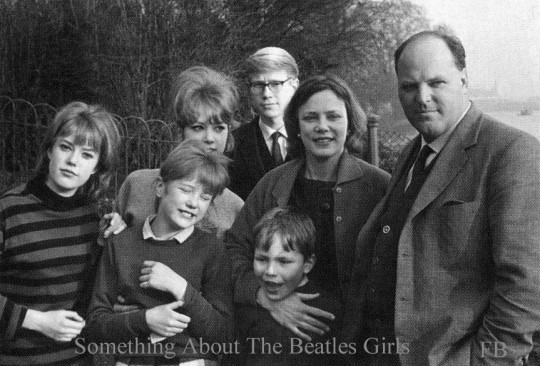
- Late 1961, Pattie’s mother pulls some strings and gets her daughter a job at the Elizabeth Arden hair salon in London
“After school, I got a job at Elizabeth Arden in Bond Street, London - because I wasn’t qualified to do anything and my mum knew the CEO there.” - Pattie Boyd (December, 2022)
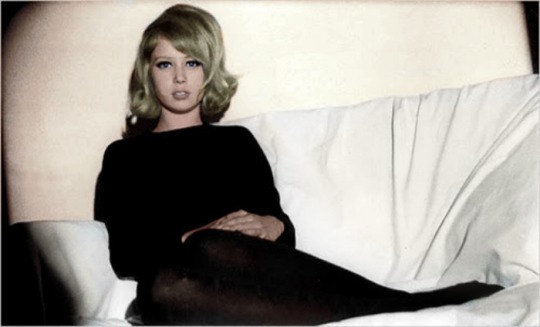
- In the new year, Pattie moves to London and begins working as a ‘shampoo girl’ / ‘trainee beautician’ on a small wage of £4.50 per week - which roughly translates to £97.53 as of 2023
“I thought: ‘I must get out, I must try and be independent’ - so I got a job and shared a flat with about five other girls.” - Pattie Boyd (December, 2022)
“I shampooed people’s hair and took their coats. I was a general dogsbody, but I must say that it was terribly glamorous because it was where I first saw fabulous magazines - like Vogue, Tatler and Harper’s Bazaar.” - Pattie Boyd (December, 2022)
“The job at Elizabeth Arden was deadly boring. I was training to be a beautician, but my heart wasn’t in it and I’m not sure I would have made the grade. Elizabeth Arden herself came in one day and berated me for my makeup. She didn’t like the black pencil under my eyes; it was not the ‘Elizabeth Arden’ look, she informed me.” - Pattie Boyd, Wonderful Tonight
- Early 1962, Pattie had been working at the salon for roughly two months, until a Cherry Marshall Model Agency staffer took a special interest in her look
“A client who worked for Honey magazine asked me if I’d ever thought of becoming a model.” - Pattie Boyd (December, 2022)
“Imagine my excitement when a client came into the salon one day and asked if I had ever thought of being a model. I said: ‘No, but I certainly could.’” - Pattie Boyd, Wonderful Tonight
- The following day, Pattie was scheduled for a test shoot
“When I arrived, she had arranged for her in-house photographer, Anthony Norris, to take some test shots of me. He had set up some lights in a little studio and she gave me a couple of outfits to wear - I remember a beret and having to look sultry, smoking Gitanes. [a French brand of unfiltered cigarettes] They were black and white, moody shots, with a bit of a Parisian feel.” - Pattie Boyd, Wonderful Tonight
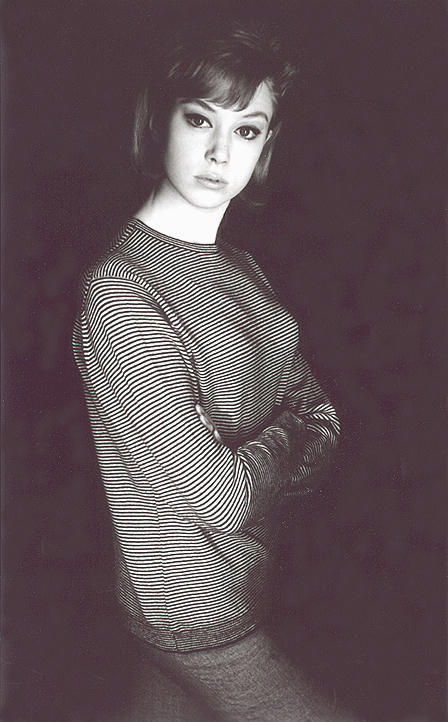
- Anthony Norris sends Pattie along to a secretary at Cherry Marshall Model Agency and a personal meeting with Cherry Marshall herself is arranged - Pattie was signed to a modelling contract the very same day
“A successful model has just got to be strict with herself and lay off all fattening foods. That means no bread, butter, spaghetti or sweets! Watch out for ‘puppy fat spread’ - eat proper meals at regular times, with lots of lean meat and green vegetables.” - Pattie Boyd (April, 1965 - Letter from London)
“My fairy godmother phoned Cherry Marshall, who then ran one of the top model agencies and she said she was sending me to her. Anthony Norris went with me and told Cherry he thought she should take me on.” - Pattie Boyd, Wonderful Tonight
“My secretary brought Pattie’s picture into me and told me Pattie was waiting outside. ‘I’ll see her’ I said - and there was Pattie, a shy 17-year-old who when she spoke, bubbles with impish charm. It would have been a mistake to change a thing about her. All we needed was to groom her rebellious hair and slim down her puppy fat. She started training immediately, the following Monday.” - Cherry Marshall, 1964
“She was shy until she started talking and then she bubbled over with enthusiasm, as she spoke of her ambition to be a model: ‘I know I’m a bit plump - but I can’t stop eating sweets!’ I said: ‘Pattie, from now on you cut out all sweets - and I want you to report on Monday at the school for training’. I wanted her rebellious hair groomed into a straight gleaming bob and she had to be taught how to apply photographic make-up. Nothing else should be changed. The name was right, the look was right and it would have been crazy to do anything to subdue her sparkling personality.” - Cherry Marshall, 1978
- Pattie attends Cherry Marshall’s modelling school - graduating within three short months
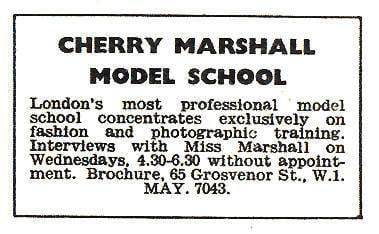
“So that’s the advice that I’d pass on to all of you who dream of becoming models: train at a school that has proved itself - not just one of those places that give you a paper diploma and nothing else - and don’t try to sell yourself when you have qualified. Let your agent do that.” - Pattie Boyd (April, 1965 - Letter from London)
- Pattie attends test shoots and works to build her portfolio - unpaid
“I knew I had a winner - everyone in the office agreed with me and they immediately swung into action. New pictures were taken, photographers and magazines informed, casting agents bombarded, press alerted. Here, we told them with absolute confidence that Pattie Boyd was the girl for the swinging sixties.” - Cherry Marshall, 1978
“Finding an agency was easy; finding a job was the hard part.” - Pattie Boyd, Wonderful Tonight
“We were too experienced to expect things to happen overnight, but we were impatient because Pattie was already seventeen and that wasn’t the youngest anymore. All we needed was to get one top photographer mad about her and she was made, but few of them would risk using an absolutely new girl on a job. They’d take test shots to find out what she was like and give her pictures for her portfolio, but no money. It was invaluable experience, but Pattie had to earn her living and we didn’t have much time.” - Cherry Marshall, 1978
“My agent would phone me last thing in the afternoon and tell me my jobs for the next day and my diaries would be quite full. But not to begin with - I had to work quite hard, going around to photographer’s studios and showing them my portfolio.” - Pattie Boyd (December, 2022)

[Rayment Kirby, 1962]
“Everyday I would go out with a list of photographer’s names and addresses and trudge around with my portfolio, hoping they would like what they saw and use me on a job. And if one did, I would try very hard to get him to give me some prints at a low rate, so that I could add them to my portfolio. I must have travelled on every bus and tube in London and when I was out of money, I walked. My diary for those days is full of IOUs for the odd fiver.” - Pattie Boyd, Wonderful Tonight
“Within three months her diary began to fill up and she (Pattie) was in constant demand.” - Cherry Marshall, 1978
“If I had a job, I had a big, tall bag - no wheels in those days - with dark shoes, light-coloured shoes, all sorts of jewellery, wigs and hairpieces.” - Pattie Boyd (December, 2022)
“I was lucky. The trekking around worked and soon my diary was full of jobs. Modelling was fun. I loved trying on clothes and fiddling with my hair and makeup. We had to do it ourselves - there were no hair stylists or makeup artists and certainly no chauffeur-driven cars to ferry us around. We were not celebrities in the way that today’s top models are. For advertising jobs, we even had to bring our own accessories. I have my old appointment diaries about what I had to take to a shoot. Usually, it was light and dark court shoes, flatties, gloves, costume jewellery, hats or caps, boots, makeup, wigs and hair pieces. You could spot a model a mile off from the heavy bags that she was carrying.” - Pattie Boyd, Wonderful Tonight

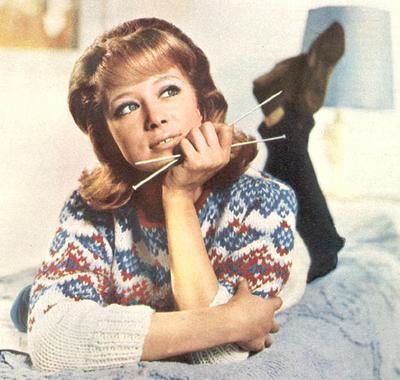

“I went on to do lots of lovely shoots, although I never enjoyed posing for Freeman’s catalogues. They’d book you in for three or four days in a row, which meant lots of money, but the clothes were hideous and far too big - they had to have clips on the back.” - Pattie Boyd (December, 2022)
“I rang Norman Parkinson, the king of them all - and asked if he’d see her. A model had to be really good before he could be approached, particularly as he was not impressed by an agent’s idea of who was photogenic. We knew that, superficially, Pattie had certain drawbacks - she was un-modelly in the accepted sense, her face was too round and she had a gap in her front teeth. She came back to us in tears, eyes swimming with disappointment, all set to give up. She finally blurted out: ‘He asked me if it’s fashionable these days to look like a rabbit!’” - Cherry Marshall, 1978
“One day I went to see the great Norman Parkinson. He looked at my book, then looked at me and said: ‘Come back when you’ve learned how to do your hair and makeup properly’ I felt so humiliated.” - Pattie Boyd, Wonderful Tonight
“Seeing myself in magazines was so exciting. I couldn’t wait to show my mother and she was totally amazed, saying: ‘How on earth did you do that?’ - she had no idea that I’d been trampling the streets trying to get jobs and hopping on buses and trains to persuade photographers to take pictures of me.” - Pattie Boyd (December, 2022)
- Late 1962, Pattie began working for Honey magazine, which led to many other opportunities...
I will try to make a Pattie Boyd 1963-1964 long post soon! :)
#pattie boyd#pattie harrison#pattie clapton#1961#1962#i tried lol#elizabeth arden#norman parkinson#jean-claude#cherry marshall#swinging sixties#london#vintage#mod#pattie boyd archive
39 notes
·
View notes
Text

ระบบการศึกษาในประเทศสหราชอาณาจักร UK
สถานศึกษาทุกระดับในสหราชอาณาจักร จะเปิดภาคการศึกษา ในช่วงเดือนกันยายน จนถึงต้นเดือนตุลาคมของปีที่หนึ่ง และสิ้นสุดภาคการศึกษาประมาณปลายเดือนมิถุนายนจนถึงต้นเดือนกรกฎาคมของปีถัดไป โดยแบ่งภาคการศึกษาออกเป็น
ภาคต้น (Autumn Term) ตั้งแต่ประมาณปลายเดือนกันยายน จนถึงเดือนธันวาคม
ภาคกลาง (Spring Term) ตั้งแต่ประมาณกลางเดือนมกราคม ไปจนถึงปลายเดือนมีนาคม
ภาคปลาย (Summer Term) ตั้งแต่ประมาณปลายเดือนเมษายน ไปจนถึงต้นเดือนกรกฎาคม
ระบบการศึกษาของสหราชอาณาจักรแบ่งเป็น ระดับประถมศึกษา ระดับมัธยมศึกษา อาชีวศึกษา และอุดมศึกษา
การศึกษาภาคบังคับของสหราชอาณาจักร เริ่มตั้งแต่อายุ 5 ปี ไปจนถึง 16 ปี โรงเรียนมีทั้งประเภท โรงเรียนรัฐบาล (State School) และ โรงเรียนเอกชน (Public หรือ Independent School) โดยในช่วงเด็กมีอายุ 3 – 4 ปี จะเข้าเรียนในระดับอนุบาล หรือโรงเรียนระดับ Nursery ซึ่งมีทั้งโรงเรียนรัฐบาลและเอกชน
1. ระดับประถมศึกษา (Preparatory School หรือ Prep School)
ตั้งแต่อายุ 5-13 ปี ใช้เวลาศึกษา 8 ปี
Pre-Prep School (เตรียมประถมศึกษา) ระยะเวลาศึกษา 2 ปี เรียกว่า Year 1 – Year 2 รับนักเรียนอายุ 5 – 7 ปี
Prep School (ประถมศึกษา) ระยะเวลาศึกษา 6 ปี เรียกว่า Year 3 – Year 8 ในบางโรงเรียนเรียก Year 7, Year 8 เป็น Form 1, Form 2
การศึกษาในระดับนี้ เน้นให้เด็กมีความสามารถในการปรับตัว และพัฒนาความคิดตามวัย กับสอนให้เด็กมีทักษะทางการเขียนและตัวเลข และเพื่อการเตรียมตัวสอบ Common Entrance Examination (CEE) เพื่อศึกษาต่อระดับมัธยมศึกษาต่อไป
2. ระดับมัธยมศึกษา (Secondary School + Sixth Form College / College of Further Education)
นักเรียนอายุ 13 ปีขึ้นไป และเรียน ได้จนถึงอายุ 18 – 19 ปี รวมระยะเวลาศึกษา 5 ปี เรียกว่า Year 9 – Year 13 (หรือ Form 3 – Form 6 (Year 12 – 13) ส���หรับโรงเรียนที่เรียกระดับชั้นเป็น Form)
การขึ้นชั้นเรียนทั้งในระดับประถมศึกษาและมัธยมศึกษา เป็นการขึ้นชั้นเรียนต่อไปได้ โดยอัตโนมัติ ไปจนถึงอายุ 16 ปี ทางกระทรวงศึกษาธิการและวิทยาศาสตร์ของอังกฤษ จะกำหนดให้มีการทดสอบความรู้ความสามารถของเด็ก โดยคณะกรรมการอิสระ ซึ่งผลการทดสอบดังกล่าว จะถูกนำไปใช้พิจารณาเรื่องการสมัครเข้าศึกษาต่อในระดับอุดมศึกษาต่อไป
การสอบนี้มี 2 ระดับ โดยจะสอบประมาณเดือนมิถุนายน ถึงเดือนกรกฎาคม ของทุกปี คือ
GCSE (General Certificate of Secondary Education) การสอบระดับนี้ จะสอบเมื่อเด็กมีอายุประมาณ 16 ปี ขึ้นไป นักเรียนเลือกสอบประมาณ 6-10 วิชา เช่น วิทยาศาสตร์ ภาษาอังกฤษ คณิตศาสตร์ สังคมศึกษา ภาษาต่างประเทศ ศิลป ฯลฯ และผลการสอบจะแบ่งเป็น 7 ระดับ คือ Grade A, B, C, D, E, F, G ผู้ที่สอบได้ Grade C ขึ้นไปจึงจะถือว่าสอบผ่าน นักเรียนที่สอบ GCSE ได้แล้ว (อย่างน้อย 5 วิชา) หากจะศึกษาต่อในระดับอุดมศึกษาจะต้องศึกษาต่ออีกประมาณ 2 ปี ในระดับ A Level (Advanced Level)
A Level (Advanced Level) เป็นการสอบเพื่อวัดความรู้ความสามารถทางวิชาการของเด็กที่มีอายุตั้งแต่ 18 ปี ขึ้นไป มีวิชาให้เลือกกว่า 50 วิชา ส่วนใหญ่นักศึกษาในระดับ A Level จะลงเรียนเพียง 2-4 วิชา เพื่อที่จะได้ศึกษาแต่ละวิชาอย่างลึกซึ้งวิชาที่นักศึกษาเลือกเรียนมักจะเกี่ยวข้องกับหลักสูตรหรือสาขาที่ต้องการศึกษาต่อ ในระดับปริญญาตรี ผลการสอบ A Level มี 5 ระดับ คือ A, B, C, D, E แต่ Grade ที่ได้ทั้ง 5 ถือว่าสอบผ่านทั้งหมด มหาวิทยาลัยส่วนใหญ่พิจารณารับผู้มีผลการสอบในระดับ C ขึ้นไป บางแห่งอาจรับเฉพาะผู้ที่ได้คะแนนระดับ A และ B
คุณสมบัติขั้นต่ำของการศึกษาต่อในระดับอุดมศึกษา ส่วนใหญ่จะพิจารณาจากผลการสอบทั้ง 2 ระดับ ดังนี้
วิชา GCSE 3 วิชา และ GCE “A” Level 2 วิชา หรือ
วิชา GCSE 1 วิชา และ GCE “A” Level 3 วิชา
หลังจากจบการศึกษาภาคบังคับเมื่ออายุ 16 ปี นักเรียนสามารถเลือกที่จะไม่ศึกษาต่อ หรือจะศึกษาต่อในระดับสูงขึ้นไปได้
แผนผังแสดงระดับการศึกษาของประเทศอังกฤษ
3. ระดับอาชีวศึกษา (Vocational School)
เป็นการ ศึกษาที่จัดขึ้นเพื่อให้นักเรียนที่มีอายุ 16 ปีขึ้นไป ซึ่งไม่ประสงค์จะศึกษาต่อระดับอุดมศึกษา หรือผู้ที่ไม่มีคุณวุฒิ GCSE แต่ประสงค์จะมีคุณวุฒิทางวิชาชีพต่างๆ เพื่อใช้ในการประกอบอาชีพ
เดิมหลักสูตรอาชีวศึกษาของอังกฤษ มี 3 ระดับ คือ First Diploma, National Diploma และ HND (Higher National Diploma) แต่ปัจจุบัน คุณวุฒิวิชาชีพ มี 2 ประเภท คือ
GNVQ (General National Vocational Qualification) เป็นการศึกษากึ่งสายอาชีพ คือ เรียนทั้งภาคทฤษฎีและปฏิบัติ มี 4 ระดับ ดังนี้
GNVQ Foundation (ระดับพื้นฐาน) หลักสูตร 1 ปี รับจากผู้ที่อายุ 16 ปี ไม่ต้องมีคุณวุฒิใดๆ
GNVQ Intermediate หลักสูตร 2 ปี ต่อจาก GNVQ Foundation
GNVQ Advanced หลักสูตร 2 ปี เทียบเท่า A-Level ผู้ที่สำเร็จหลักสูตรนี้สามารถสมัครเข้าศึกษาต่อในระดับอุดมศึกษาได้
GNVQ 4 หลักสูตร 2 ปี เทียบเท่าหลักสูตรปีที่ 1 ของระดับ ปริญญาตรี จึงสามารถเข้าศึกษาต่อปริญญาตรีของมหาวิทยาลัยได้ โดยใช้เวลาอีก 2 ปี
NVQ (National Vocational Qualification) เป็นวุฒิการศึกษาสายอาชีพและการฝึกปฏิบัติวิชาชีพเฉพาะ โดยผู้ว่าจ้างสหภาพแรงงงานและผู้เชี่ยวชาญในสาขาอาชีพนั้นๆ เป็นผู้กำหนดมาตรฐานการศึกษา การศึกษาในระดับนี้แบ่งเป็น 5 ระดับ คือ NVQ1, NVQ2, NVQ3, NVQ4, NVQ5 แต่ละระดับจะยึดตามความสามารถเป็นหลัก ไม่มีการกำหนดระยะเวลาตาย��ัวในการเรียน
4. ระดับอุดมศึกษา (Higher Education)
การศึกษาในระดับมหาวิทยาลัย ซึ่งส่วนใหญ่เป็นมหาวิทยาลัยในการสนับสนุนของรัฐ การศึกษาระดับอุดมศึกษา แบ่งเป็น
หลักสูตรปริญญาตรี (First Degree)
ในอังกฤษ เวลส์ และไอร์แลนด์เหนือ
หลักสูตรทั่วไป 3 ปี ผู้สำเร็จการศึกษา จะได้รับปริญญา BA (ศิลปศาสตรบัณฑิต) BBA (บริหารธุรกิจบัณฑิต) BEd (ศึกษาศาสตร์บัณฑิต) BSc (วิทยาศาสตร์บัณฑิต) LLB (นิติศาสตร์บัณฑิต) เป็นต้น
หลักสูตรบางสาขาใช้เวลาศึกษามากกว่า 3 ปี เช่น วิศวกรรมศาสตร์ (4 ปี) สถาปัตยกรรมศาสตร์ (5ปี) ทันตแพทย์ศาสตร์ (5ปี) สัตวแพทย์ศาสตร์ (5ปี) แพทย์ศาสตร์ (6ปี)
ในสก๊อตแลนด์ มี 2 หลักสูตร คือ Ordinary Degree (3ปี) และ Honours Degree (4ปี) โดยเรียนเพิ่มจาก Ordinary degree อีก 1 ปี
นอกจากนี้ มหาวิทยาลัยหลายแห่งยังเปิดหลักสูตรการศึกษาที่หลากหลายออกไปอีก ดังนี้
Joint Honours Degree เป็นการเรียนร่วมตั้งแต่ 2 สาขาวิชาขึ้นไป อาจเป็นสาขาวิชาที่ใกล้เคียงกัน เช่น เศรษฐศาสตร์และคณิตศาสตร์ หรืออาจเป็นสาขาที่ไม่ใกล้เคียงกันแต่ยังเกี่ยวข้องกันในทางหนึ่งทางใด เช่น คอมพิวเตอร์กับจิตวิทยา ทั้งนี้ กำหนดน้ำหนักการเรียนในแต่ละสาขาวิชา เท่ากัน
Combined Degree คือ ปริญญาร่วม โดยการเรียนแต่ละสาขาวิชา ไม่จำเป็นต้องมีน้ำหนักการเรียนเท่ากัน
Sandwich Courses เป็นการเรียนโดยรวมเวลาฝึกงานกับเวลาเรียนเข้าด้วยกัน เช่น การฝึกงานด้านอุตสาหกรรม การค้า การบริหารธุรกิจ หรืออาชีพอื่นๆ จึงต้องใช้ระยะเวลาศึกษานานกว่าปกติ (3 ปี) เป็น 4 ปี การฝึกงานอาจเป็นช่วงเดียว คือ เป็นเวลา 1 ปี หรือ 2 ช่วงๆ ละ 6 เดือน หากเป็น 2 ช่วง เรียกว่า หลักสูตร Thin-sandwich หลักสูตรทั้ง 2 ประเภทนี้ นักศึกษาต้องกลับมาเรียนที่ มหาวิทยาลัยในปีสุดท้ายก่อนสำเร็จการศึกษา
สำหรับผู้ที่มีผลการเรียนระดับปริญญาตรีไม่ถึงเกณฑ์มาตรฐานการเข้าศึกษา ปริญญาโทของมหาวิทยาลัย หรือผู้ที่เปลี่ยนสาขาวิชาเรียน มหาวิทยาลัยส่วนใหญ่จะรับให้เข้าศึกษาหลักสูตร Post-Graduate
Certificate/Diploma ระยะเวลา 9 เดือน ถึง 1 ปีก่อน แล้วจึงรับเข้าเรียนต่อหลักสูตรปริญญาโท
หลักสูตรระดับสูงกว่าปริญญาตรี (Higher degree) มี 2 ประเภท
ประเภทหลักสูตรเข้าชั้นเรียน (Taught Course) ระยะเวลาศึกษา 1 ปี
นักศึกษาสามารถเลือกเรียนเฉพาะด้านได้ โดยอยู่ในความดูแลของอาจารย์ที่ปรึกษา หรือผู้ทรงคุณวุฒิในสาขาวิชานั้นๆ วิธีการเรียนการสอนแบ่งเป็น 2 ส่วนคือ ในครึ่งปีแรกของหลักสูตรเป็นการบรรยายในชั้นเรียน การสัมมนาการติวกลุ่มย่อย หรือการทำงาน ในห้องทดลอง หลังจากนั้นอีกครึ่งปีจะเป็นการทำงานศึกษาวิจัยชิ้นใหญ่หรือที่วิทยานิพนธ์ ปริญญาที่ได้รับ เป็นระดับปริญญาโท อาทิ MSc., MA, MBA
เป็นต้น
ประเภทหลักสูตรการค้นคว้าวิจัย (Research Course) ใช้เวลาศึกษา 3 ปี โดยการทำวิจัยและเขียนวิทยานิพนธ์ ในปีแรกของปริญญาเอก เป็นการศึกษาวิจัยเพื่อให้มีความรู้ความสามารถเข้ามาตรฐานการเรียน
ปริญญาเอก เรียกว่าระดับ M.Phil เมื่อมีผลงานและความรู้ความสามารถตาม มาตรฐานจึงปรับให้เข้าศึกษาในระดับปริญญาเอก Ph.D ปีที่ 2 (ไม่ใช่ Ph.D ปี 1) ซึ่งผลงานไม่ถึง มาตรฐานปริญญาเอกจะไม่ได้ผ่านศึกษาต่อจนสำเร็จหลักสูตร Ph.D. แต่จะได้รับวุฒิ M.Phil ซึ่งอาจเทียบเท่าเพียงระดับปริญญาโท แต่ผู้ที่ได้เรียนครบจนสำเร็จหลักสูตร Ph.D ก็จะได้รับวุฒิ Ph.D แต่ไม่ได้วุฒิ M.Phil เพียงอย่างใดอย่างหนึ่ง
New Route to Ph.D เป็นอีกทางเลือกของการศึกษาในระดับปริญญาเอก ในประเทศอังกฤษ ใช้เวลาเรียน 4 ปี โดย 30-40% ของหลักสูตรจะเป็นการเรียนแบบ Taught Course และอีก 60-70% จะเป็นการวิจัย
EDUCATION SYSTEM IN THE UK
Education is important in England, as it is Wales and Scotland too.
British children are required by law to have an education until they are 16 years old.
Education is compulsory, but school is not,children are not required to attend school. They could be educated at home.
1996 Education Act of the UK
Section 7 of the 1996 Education Act states:
"The parent of every child of compulsory school age shall cause him to receive efficient full-time education suitable-
(a) to his age, ability and aptitude, and
(b) to any special educational needs he may have,
either by regular attendance at school or otherwise."
Education is free for all children from 5 to 16.
Full-time education is compulsory for all children aged between 5 and 16 (inclusive) across England. This can be provided by state schools, independent schools, or homeschooling.
About 94 per cent of pupils in England, and the rest of the UK, receive free education from public funds, while 6 per cent attend independent fee paying schools or homeschooling.
(Homeschooling numbers uncertain - BBC report)
Curriculum
All government-run schools, state schools, follow the same National Curriculum.
The School Year
The school year runs from September to July and is 39 weeks long.
For many areas the year is divided into six terms:
September to October
October to December
January to February
February to March
April to May
June to July
(Some counties in England still follow the traditional three terms a year.)
The dates for school terms and holidays are decided by the local authority or the governing body of a school, or by the school itself for independent schools.
School holidays
The main school holidays are:
Christmas- 2 weeks
Spring - 2 weeks
Summer - 6 weeks
There are also one week holidays:
end of October
mid February
end of May
When do kids start school?
Children normally start primary school at the age of four or five, but many schools now have a reception year for four year olds.
Children normally leave at the age of 11, moving on to secondary school (High school).
Please note aslo:
Every three and four year old in England is entitled to 12.5 hours of free early learning per week, in nurseries, playgroups, pre-schools or at their childminders for 38 weeks of the year.
When do kids leave school?
British children are required to attend school until they are 16 years old. In England, compulsory schooling currently ends on the last Friday in June during the academic year in which a pupil attains the age of 16. Current government proposals are to raise the age until which students must continue to receive some form of education or training to 18. This is expected to be phased in by 2015.
At the age of 16, students in England, Wales and Northern Ireland take an examination called the GCSE (General Certificate of Secondary Education). Study of GSCE subjects begins at the start of Year 10 (age 14-15), and final examinations are then taken at the end of Year 11 (age 15-16).
In state schools English, Mathematics, Science, Religious Education and Physical Education are studied during Key Stage 4 (the GCSE years of school); in England, some form of ICT and citizenship must be studied and, in Wales, Welsh must be studied. Other subjects, chosen by the individual pupil, are also studied.
In Scotland, the equivalent of the GCSE is the Standard Grade.
After completing the GCSE, some students leave school, others go onto technical college, whilst others continue at high school for two more years and take a further set of standardized exams, known as A levels, in three or four subjects. These exams determine whether a student is eligible for university.
Education stages:
Nursery Schools
3-4 years old
Primary Schools
5-11 years old
Foundation Stage - Nursery, Reception, (Infants) Key Stage 1 - Years 1 and 2 (Infants)
Key Stage 2 -Years 3 - 6 (Juniors)
Secondary Schools
12-18 years old
Years 7-13 (Key Stage 3, 4 & 5)
CR :: เว็บไซต์ projectbritain.com ; oeauk.net
เรียบเรียงโดย :: ประภัสรา โคตะขุน ; http://prapasara.blogspot.com , ระบบการศึกษาในประเทศสหราชอาณาจักร UK (google.com)
ระบบการศึกษาในประเทศสหราชอาณาจักร UK (google.com)
2 notes
·
View notes
Text
Explore BMC's comprehensive GCE O, N, and A Level courses in Singapore. Our exceptional education programs provide a solid foundation for academic success. Enroll now for a brighter future.
0 notes
Text
Explore job opportunities at Lanka Sugar Company in 2024! Apply for the Executive Secretary position, requiring GCE Advance Level qualification.
#job vacancies 2024#sri lanka job vacacnies#lanka career#job vacancies in sri lanka#Executive Secretary position#requiring GCE Advance Level#Lanka Sugar Company
0 notes
Text
Art Course and Artist Research
All art courses are different, and various opportunities and knowledge are available. However, in this blog post, I’ll discuss the courses I am interested in. Most of these courses will be at Gray’s School of Art in Aberdeen, Scotland.
Gray's School Of Art provides a student-centred curriculum in fine art and design to empower the next generation of creative graduates. The curriculum encourages collaboration, exhibitions, international field study trips, and entrepreneurial skills. Graduates often set up businesses or pursue further studies, fostering a supportive environment for innovative thinkers to express their uniqueness and make positive changes.
Course 1 - Foundation in Art and Design (BA (Hons))
The foundation curriculum offers a comprehensive first-year experience that explores subject areas through creative activities and opportunities. It encourages exploration, collaboration, and experimentation with ideas. The curriculum applies newfound knowledge to real-world situations, developing a deeper understanding of creativity, critical thinking, and sustainability. It helps students identify their motivations and interests, providing guidance on the most appropriate creative direction and subject areas for the second year.
This full-time, studio-based year will develop your creative and critical practice and challenge your understanding of the Art and design disciplines. These experiences will expand on your contextual and practical knowledge, introduce you to the Creative Industries, and inform your course options for Year 2.
This course offers a wide range of experience and specialisms, providing numerous employment opportunities. Through the "Creative Futures" module, students can identify and exploit their niche within the Creative and cultural industries while focusing on the relevant creative landscape after the first year.
The entry requirements for the Foundation course include one of the following: an SQA Higher, BCC in Art & Design, a GCE A Level in CC in Art & Design, a H3H3H4 Irish Leaving Certificate Higher in Art, and an IB Diploma in 24. All applicants with the required qualifications will be invited to attend a portfolio review/interview and participate in a selection process. Successful applicants will be offered a place after viewing their digital portfolios. If more information is needed, an interview will be scheduled. Applicants will also be invited to an Applicants Event to meet staff and students, experience the teaching environment, and ask questions. International students must meet direct entry requirements to gain additional points through Robert Gordon University's International College. English language requirements include an IELTS of 6.0 with no lower than 5.5 component.
Course 2 - Fine Art - Painting, Photography, Printmaking, Sculpture, Moving Image (BA (Hons))
The Fine Art course prepares students for their future careers as artists by enhancing their critical aptitude, creative skills, and professional understanding. The curriculum covers various disciplines like drawing, painting, printmaking, sculpture, photography, and moving images, utilising both analogue and digital methodologies. The course includes studio-based projects, public exhibitions, work experience, and international study options, culminating in an annual Degree Show.
In Year 2, students expand their understanding of theoretical principles through creative interaction and learning from tutors, technical experts, peers, and themselves. They develop critical writing and professional skills, deepening their awareness of the Creative Industries. In Year 3, students develop creative play, risk-taking, and critical thinking by exploring their chosen themes and workshop interests. They gain personal insight into professional ambitions through work experiences, placements, or international study. In Year 4, students have an extended period of supported independence to produce a fully realised body of work, answering critical questions and showcasing their talents.
Gray's School of Art’s curriculum allows students to customise their learning experience through optional study pathways. These include an intensive studio-based study, which focuses on developing a deeper understanding of their studio practice, and a combined work experience and studio pathway, which broadens students' awareness of the professional working environment. Students can also undertake a semester-long international study with partner institutions across Europe, Canada, and the US.
The entry requirements for Year 2 students include relevant GCE A Levels, HNC/HND or Diploma in Foundation Studies, GCE A Level BCC, or IB Diploma 27. Advanced entry applicants with the appropriate qualifications will be invited to an advanced portfolio review/interview and participate in a selection process. Widening access applicants have minimum SQA Higher CCC entry requirements, including Art / Design and English. Applicants who may not hold standard qualifications are encouraged to apply if they can provide other relevant creative work, qualifications, and life experiences. A portfolio review/interview is still required for this candidate category. Successful applicants should submit a digital portfolio through a Flickr account, and if more information is needed, an interview will be invited.
Course 3 - Art Therapy - Provided by Alison - Provider website
Art therapy is a psychotherapy method that uses art as a form of communication between therapist and patient to treat various mental health conditions. This course explores the concepts and practices of art therapy, providing skills to work confidently with clients of all artistic abilities in multiple settings. It covers the history, principles, key figures in its evolution, and the critical types of art therapy, including individual and group therapy. The course also explores the value of art therapy in personal and professional lives. Creativity is a powerful tool for improving mental health and well-being; art therapy offers a way to tap into this side. The course discusses creative therapy, mindfulness practices, and techniques for using art therapy with clients. It also focuses on drawing and its application in treating children with physical and mental impairments. The course also covers common mental illnesses art therapists encounter, recording techniques, supervision, boundaries, and therapeutic limitations. This course is designed for anyone interested in learning about art therapy and working with clients with physical and mental impairments.
You can email the provider for further details about entry requirements and certificates.
This course is online and completely free!
In conclusion, the varied range of courses offered by Aberdeen's Gray's School of Art are intended to empower and inspire graduates who are creative. A comprehensive first-year experience is offered by the Foundation in Art and Design course, which promotes creativity, critical thinking, and practical knowledge. Through studio projects, exhibitions, and possibilities for overseas study, the Fine Art programme prepares students for professional employment by allowing them to specialise in a variety of areas. The course on art therapy also covers the therapeutic use of art to mental health issues, with a focus on creativity and mindfulness. Taken as a whole, these courses provide students with extensive chances to investigate, refine, and utilise their creative abilities in a variety of professional settings.
Here's a little about what artists did to get where they are in their careers!
Kara walker
Walker attended the Atlanta College of Art, where she focused on race-specific issues and a double standard often levelled at minority art students. She later attended the Rhode Island School of Design, where her work expanded to include sexual and racial themes based on portrayals of African Americans in art, literature, and historical narratives. An expert researcher, Walker began to draw on diverse sources, from portraits to pornographic novels, that have continued to shape her work. Other artists who addressed racial stereotypes were also important role models for the emerging artist. While in graduate school, Walker alighted on an old form that would become the basis for her most vital early work: cut paper silhouettes, widespread in Victorian middle-class portraiture and illustration. These silhouettes possessed a streamlined elegance that simplified the frenzy she was working on, making them the basis for her strongest early work.
Gone: A Historical Romance of a Civil War by Bettye Walker (1994) was a critical success, leading to representation with Wooster Gardens. She later received the MacArthur Foundation Achievement Award in 1998. However, Walker faced opposition due to her use of racial stereotypes. Betye Saar, famous for her iconic use of racial stereotypes in 20th-century art, questioned Walker's use of racist images and spearheaded a campaign questioning the art world's betrayal of African Americans. Walker's series of watercolours, Negress Notes, was criticised for its brutal and sexually graphic content, while others defended her for exposing the ridiculousness of these stereotypes. Despite these criticisms, Walker's work continues to be a significant influence in American art.
Obviously Kara Walker is an African-American artist, the process and opportunities are slightly different than in the UK where we have apprenticeships, college, university and foundation courses.
Anish Kapoor
Kapoor, a young artist, initially enjoyed finishing his mother's paintings but had no intention of becoming an artist. At 17, he and his brother travelled to Israel to live and work at a kibbutz, embracing communal living and utopian ideas. Initially, he planned to study engineering but realised he wasn't good at mathematics. After hitchhiking across Europe, he settled in London to attend Hornsey College of Art in 1973. His mentor, British-Romanian sculptor Paul Neagu, encouraged him to pursue Performance art, which influenced his sculpture approach.
Kapoor, a postgraduate artist, quit Chelsea School of Art after a year and returned to India. He realised his art was about ritual and doing, leading to a three-year period of creativity and the creation of his first major works, ritualistic pigment sculptures. Initially mistaken for a female artist, Kapoor gained recognition within the international art community despite the confusion surrounding his material.
Nicholas Logsdail, owner of Lisson Gallery in London, invited Kapoor to join the New British Sculptors group in the early 1980s. Kapoor, known for his use of traditional earthy materials and spiritual expression, represented Britain at the 1990 Venice Biennale and won the Turner Prize in 1991. The group included Julian Opie, Antony Gormley, Richard Deacon, Tony Cragg, and Rachel Whiteread, providing a network for Kapoor to exhibit and share ideas.
Kapoor is a good example of studying abroad, and the opportunities are different but only for some.
Judith Tucker
Judith Tucker is an artist and academic who explores the intersection of social history, personal memory, and geography through drawing, painting, and writing. She holds a B.A. in Fine Art from the Ruskin School of Art, University of Oxford, an M.A. in Fine Art, and a PhD in Fine Art from the University of Leeds. She was invited to be an artist in Contemporary British Painting in 2013 and is currently vice-chair. Tucker writes academic essays and collaborates with radical landscape poet Harriet Tarlo. She has been a finalist in the Jackson’s Painting Prize, the Scenes of Everyday Life category prize, and shortlisted for the Westmorland Landscape Prize and New Light Prize. She has exhibited in various venues, including Arthouse1 and Collyer Bristow London, as well as in China. She also serves as a Senior Lecturer in the School of Design at the University of Leeds. However, Tucker died on 13 November 2023 in a tragic car accident, but her memory and work will live on in her students and artwork.
In conclusion, Walker, Kapoor, and Tucker's varying career paths show the range of paths and difficulties artists encounter in various cultural situations. Despite backlash, Kara Walker's emphasis on racial themes and contentious usage of stereotypes have solidified her position in American art. The path taken by Anish Kapoor, who went from communal living in Israel to becoming a well-known sculptor, emphasises the value of cultural inquiry and mentoring. Despite her tragic passing, Judith Tucker's artistic and scholarly fusion of social history, firsthand recollections, and geographic location has left a lasting legacy. The varied experiences and possibilities that these artists had in their home nations shaped their individual contributions to the art world, as these artists' tales illustrate.
RESOURCES
Foundation course - Foundation in Art and Design Course with BA (Hons) Degree | RGU University – Aberdeen, Scotland, UK
Fine Arts course - Fine Art - Painting, Photography, Printmaking, Sculpture, Moving Image
Art Therapy course - Intro to Art Therapy & Provider Website
Kara Walker - Why is Kara Walker so important? and Kara Walker Paintings, Bio and Ideas
Anish Kapoor - Anish Kapoor Art, Bio and Ideas and The Creative Life of Anish Kapoor
Judith Tucker - Judith Tucker and Judith Tucker - Contemporary British Painting
2 notes
·
View notes
Note
Hi! This is kind of random but I've been googling around and haven't been able to figure it out.... Do you know what level of education Ringo had? I know John had some college, and I *believe* George and Paul would have had something below or equal to a high school equivalency, but I can't find any solid info on Ringo. Thanks!
Hi anon!
So, I consulted my copy of Tune In for this and here's a basic rundown. For more details I'd recommend you check the book itself – it's very well indexed and there are epubs knocking about + a version on the archive.
Ringo was sick for more than an entire year around the age of 7-8 due to a terrible case of appendicitis, which resulted in life-threatening infections that put him into a coma for weeks and kept him bed-ridden for months. This meant he fell extremely behind in school, missing out on learning how to read and write. He ended up picking up those skills because a family friend helped tutor him but he couldn't fully catch up. He ended up in a secondary school class, which basically deemed him and his classmates hopeless for anything but manual labor and ended up quitting school at 15, the moment he was no longer required to. He'd also missed two years of school again due to tuberculosis.
After this, he began collecting unemployment benefits in between doing several smaller jobs like working on ships and in the railways, before beginning an apprenticeship at a factory to become an equipment manufacturer.
Also, I didn't recheck this, but IIRC George didn't directly have a high school equivalent* because I think he dropped out before finishing classes at the Institute (I actually can't recall if George sat his O-Levels, but I'm relatively confident he didn't do any A-Levels like Paul did. In any case I think he started doing an apprenticeship as an electrician when he was about 15.)
*Based on your wording I'm guessing you're American, but my understanding (and Brits with more knowledge than me are welcome to interject) is O-Levels/GCEs are akin to mandatory final exams for all British students, whereas A-Levels are the continued secondary education you do to get into universities. In general, I think the US public education system does not make the distinction between "finished mandatory school" and "university-eligible". Although, one might note that John did not in fact pass his O-Levels (or do A-Levels for that matter) but was recommended for the Liverpool College of Art, which I imagine had its own admission system, by his teachers who wanted to make sure he had prospects (off-topic always fascinated by how much faith in his person John seemed to command). I also think Paul did take university/college classes, but did not end up doing any of his first year exams.
EDIT: sorry I think I mixed stuff up. It seems like Paul would have gotten into teaching college but ended up going to Hamburg instead.
12 notes
·
View notes